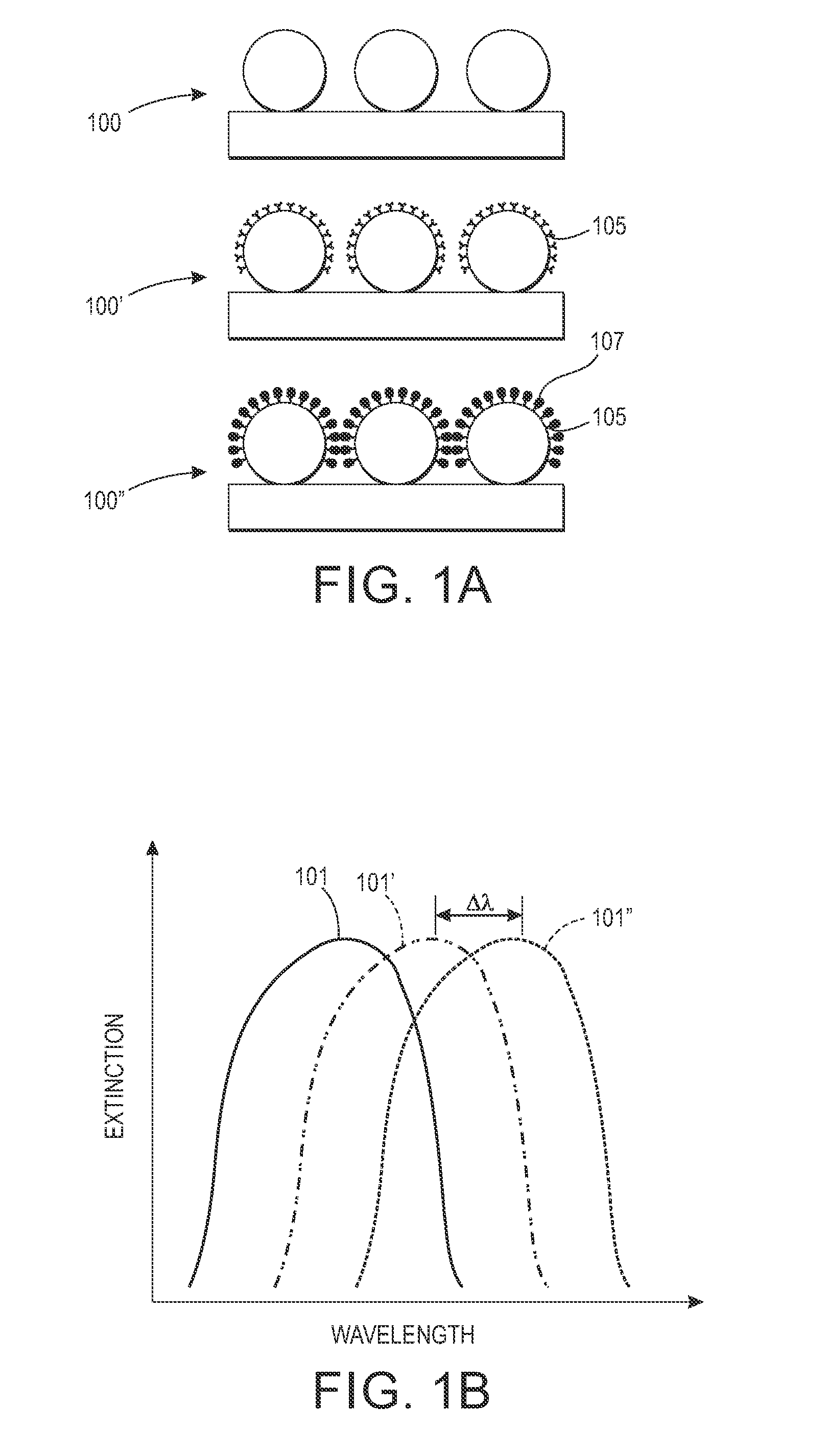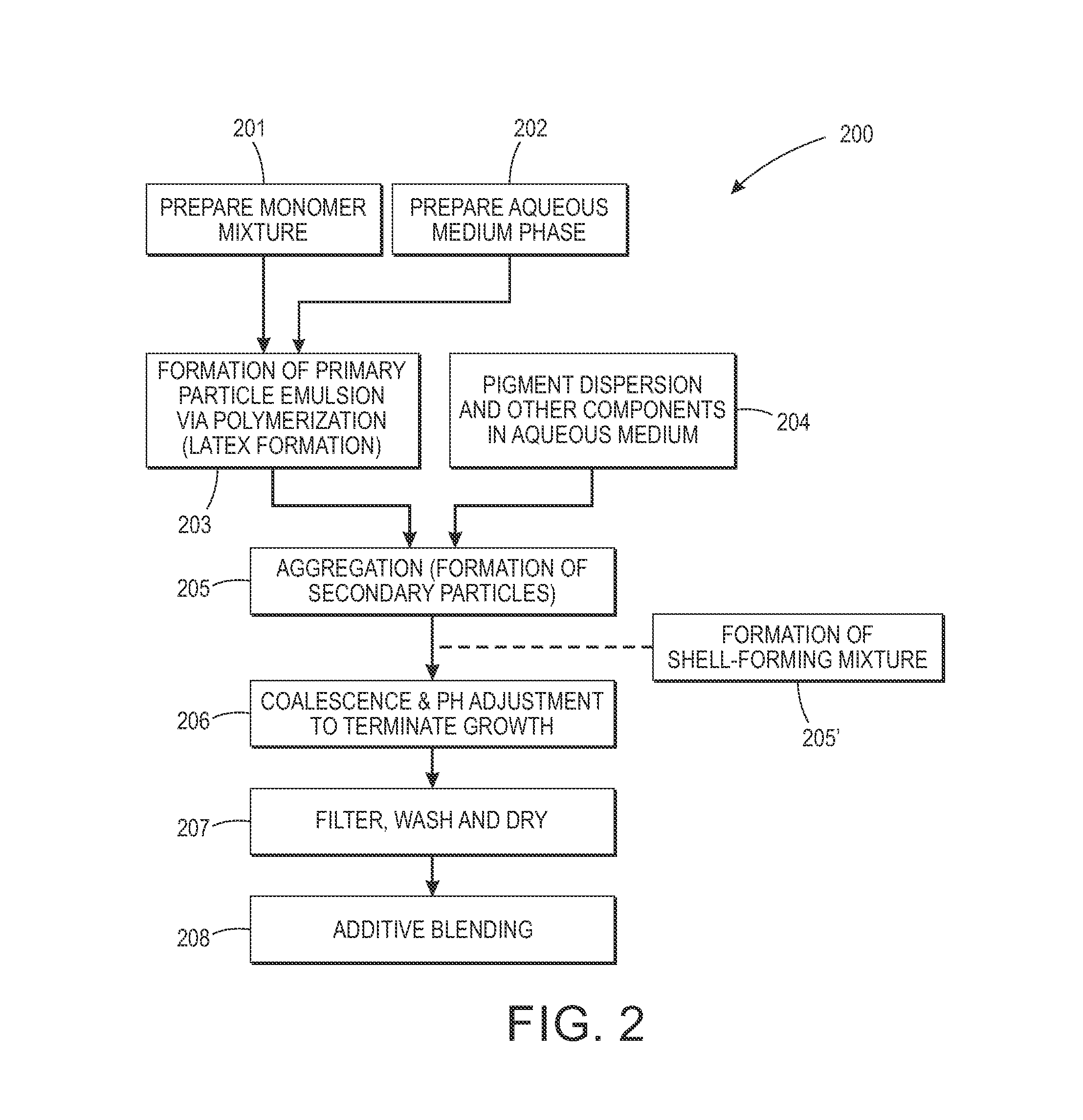Emulsion aggregation toner for sensor and antibacterial applications
a technology of aggregation and toner, applied in the field of coreshell toner compositions, can solve the problems of affecting the dispersion, erratic coagulation, limited manufacturing methods, etc., and achieve the effects of enhancing the thermal and electrical conductivity of toner, cost-effective, and surface-enhanced raman scattering
- Summary
- Abstract
- Description
- Claims
- Application Information
AI Technical Summary
Benefits of technology
Problems solved by technology
Method used
Image
Examples
example 1
Production of Toner Particles with Silver (Ag) Nanoparticles Added During Aggregation / Coalescence
[0153]Preparation of Non-Pigmented Polyester Toner with 1% Silver Nanoparticles:
[0154]The following are added in a glass kettle and homogenized using IKA ULTRA-TURRAX® T50 homogenizer at 4000 rpm: 1) 101.43 g of amorphous polyester resin emulsion (207 nm; 33.44 wt %; 56° C. Tg); 2) 99.03 g of amorphous polyester resin emulsion (215 nm; 34.25 wt %; 60.5° C. Tg); 3) 35.56 g of crystalline polyester resin emulsion (151 nm; 25.74 wt %; 71.04° C. Tm); 4) 3.3 g of anionic surfactant DOWFAX® 2A1; 5) 42.23 g of polyethylene wax emulsion; and 6) 350.69 g of deionized water.
[0155]Thereafter a flocculent agent of 2.51 g of Al2(SO4)3 mixed with 67.18 g of deionized water is added drop-wise to the kettle and homogenized for 10 minutes.
[0156]The mixture is degassed for 20 minutes at 280 RPM, heated at a rate of 1° C. per minute to 37° C. at 350 RPM for aggregation, until the particle size is 5.0 μm.
[0...
example 2
Production of Toner Particles with Silver (Ag) Nanoparticles Added During Phase Inversion Emulsification (PIE)
[0159]Preparation of “Resin Emulsion A” Containing 1% Silver Nanoparticles:
[0160]328.77 g of amorphous propoxylated bisphenol A fumarate resin (Mw=12,500, Tg onset=56.9° C., acid value=16.7 mg KOH / g resin), 1.84 g of silver nanoparticles, and 44.09 g of carnauba wax are dissolved in 2322 g of ethyl acetate at 70° C.
[0161]Separately, 4.0 g of DOWFAX® 2A1 solution and 6.3 g of concentrated ammonium hydroxide are dissolved in 1790 g of deionized water at 70° C.
[0162]The ethyl acetate solution is then poured slowly into the aqueous solution under continuous high-shear homogenization (10,000 rpm, IKA ULTRA-TURRAX® T50).
[0163]After an additional 30 minutes of homogenization, the reaction mixture is distilled at 80° C. for two hours.
[0164]The resulting emulsion is stirred overnight, strained through a 25-micron sieve, and centrifuged at 3000 rpm for 15 minutes. The supernatant is d...
examples 3
Production of Toner
[0165]Preparation of Cyan Toner Containing Emulsion Containing 1% Silver Nanoparticles:
[0166]In a 2 L reactor vessel are added 595.27 g of the above Resin Emulsion A having a solids loading of 18 weight %, along with 87.48 g of crystalline polyester emulsion (CPE) having a solids loading of 18 weight %, 63.48 g of cyan pigment PB 15:3 having a solids loading of 17 weight %, 2 g of DOWFAX® 2A1 surfactant having a solids loading of 47.68 weight %, 123 g of 0.3M HNO3, and 395 g of a deionized water and stirred using an IKA ULTRA-TURRAX® 50 homogenizer operating at 4,000 rpm.
[0167]Thereafter, 36 g of a flocculent mixture containing 3.6 g polyaluminum chloride mixture and 32.4 g of a 0.02 molar (M) nitric acid solution are added dropwise over a period of 5 minutes. As the flocculent mixture is added drop-wise, the homogenizer speed is increased to 5,200 rpm and homogenized for an additional 5 minutes.
[0168]Thereafter, the mixture is heated at a 1° C. per minute tempera...
PUM
| Property | Measurement | Unit |
|---|---|---|
| thickness | aaaaa | aaaaa |
| thickness | aaaaa | aaaaa |
| weight | aaaaa | aaaaa |
Abstract
Description
Claims
Application Information
 Login to View More
Login to View More - R&D
- Intellectual Property
- Life Sciences
- Materials
- Tech Scout
- Unparalleled Data Quality
- Higher Quality Content
- 60% Fewer Hallucinations
Browse by: Latest US Patents, China's latest patents, Technical Efficacy Thesaurus, Application Domain, Technology Topic, Popular Technical Reports.
© 2025 PatSnap. All rights reserved.Legal|Privacy policy|Modern Slavery Act Transparency Statement|Sitemap|About US| Contact US: help@patsnap.com



